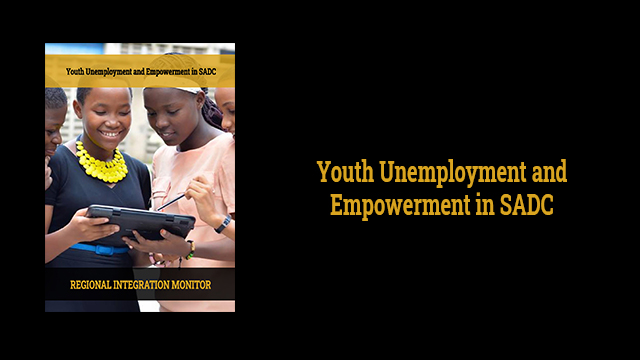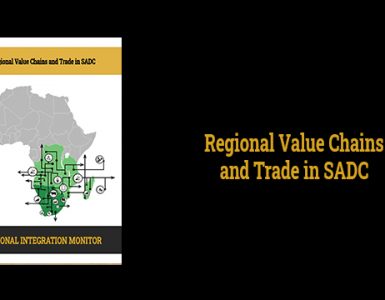Policy Spotlight: Employment Tax Incentive in South Africa
Youth unemployment is a global challenge that needs serious and immediate attention. Some SADC countries have implemented policies and programmes to resolve youth unemployment. Some national policies and programmes follow a state-led approach, while others take a public-private partnership approach. The South African ETI is a state-led approach aimed at encouraging youth employment through a wage-subsidy programme.The ETI was proposed in 2012 initially as a ZAR 5.0 billion subsidy to be spent on 423,000 employees of which 178, 000 would be new recruits[46]. The ETI Act No. 26 of 2013 was enacted in October 2013 to reduce the costs of hiring inexperienced youth aged 18 – 29 years old, for the first two years if they earn between ZAR 2,000.0 and ZAR 6,000.0 per month[47]. In the first year of employment companies claim 50.0% of tax subsidy for employees earning ZAR 2,000.0 and ZAR 1,000.0 for those earning between ZAR 2, 001.0 and ZAR 4,000.0 per month[48]. As a result, the total of ZAR 11.0 billion was claimed by 50,977 employers between January 2014 and March 2017[49]. As for 2017/2018 only, total of ZAR 4.0 billion tax claims was made by companies[50]. The number of youths benefitting from ETI was estimated at 3.6 million from inception of the policy to March 2015[51]. As for 2015/2016 only, about 31,000 employers claimed tax subsidy for one million youth[52]. Most of employment opportunities under ETI are offered by companies located in the Special Economic Zones (SEZ)[53].
Despite an increase in the number of jobs supported by the ETI, youth unemployment remains high in South Africa. In 1Q2019 youth unemployment is estimated at 63.0% for those found in the 15-34 age group. This is the worst unemployment rate among the youth population which constitutes more than 60.0% of South Africa’s labour force[54]. In fact, unemployment has been steadily increasing for this age group. For example, unemployment increased from an annual average of 26.0% from 2013 to 2017, to 27.0% in 2018[55]. This illustrates that, despite considerable growth in the number of ETI supported jobs, the policy is not a sufficient solution to youth unemployment on its own. Solution to increasing youth unemployment should focus on supporting them with technical and financial resources to establish own businesses. For instance, the Zambian government introduced Youth Development Fund in 2012 for young people to start own small scale businesses[56]. Supporting young people with technical and financial resources to establish own businesses can ultimately contribute to long term self-employment, instead of short-term solution to unemployment offered by the ETI. Currently, the policy only aims at equipping young people with work experience over a two-year period which can be vital for job retention in some cases. It is also not clear whether after acquiring skills through apprenticeship youth are offered certificates (formal/informal) that can be used in future jobs searches.
The tax subsidy declines by half in the second year of employment, and this obviously affects the amount claimed by companies. For instance, ETI declines from 50.0% to 25.0% for employees earning ZAR 2,000.0 and from ZAR 1,000.0 to ZAR 500.0 for those earning between ZAR 2,001.0-4,000.0. There is also no tax subsidy for employees earning ZAR 6,000.0. Decline in tax subsidy together with absorbing unskilled and inexperienced youth contribute to reluctance of some companies to implement the policy[57]. There are also some companies that only implement the policy for the sake of getting tax subsidy, but failed to create new jobs for the young people[58].
The policy also creates inequality between regions and companies. Only companies located in the SEZ are preferred, while the ones outside together with public companies are not considered[59]. The policy also targets youth in the 15-29 age group, and side-lining those found in 30-35 age group. In order to solve the current state of youth unemployment in South Africa, ETI should be implemented in different parts of the country and should also target all youth population. As a result, review and extension of ETI to February 2029 should have considered other companies outside SEZ and youth found in the 30-35 age group[60].
Youth unemployment is a challenge that needs a holistic approach. And this called for public-private involvement in South Africa to combat it. Although this approach is commended for absorbing some unemployed youth in South Africa, it is not a sustainable solution to the plight of young people. A sustainable solution to youth unemployment should involve equipping them with technical skills (vocational and business management trainings) and financial resources to establish own businesses. Government and other stakeholders should monitor the progress of youth businesses to avoid collapse and other related challenges. At present, ETI only trains youth for formal employment (with no guarantee of employment after two years of attachment) rather than self-employment.
By Tsepiso Rantso
[46] NT 2016. Media Statement: Release of a Descriptive Report Detailing the Progress of the Employment Tax Increase, National Treasury: Pretoria. Available At: http://www.treasury.gov.za/ [Last Accessed: 9 April 2017].
[47] SARS 2014. How the Employment Tax Incentive Works, on the South African Revenue Service Website, viewed on 6 April 2019, from https://www.sars.gov.za/.
[48] SARS 2014. How the Employment Tax Incentive Works, ibid.
[49] NT 2017. Data Report: Employment Tax Incentive Claims, National Treasury: Pretoria. Available At: http://www.treasury.gov.za/ [Last Accessed: 13 June 2019].
[51] NT 2016. Employment Tax Incentive Descriptive Report, National Treasury: Pretoria. Available At: http://www.treasury.gov.za/ [Last accessed: 6 April 2019].
[52] NT 2019. Budget Review 2019, ibid.
[53] SARS 2014. How the Employment Tax Incentive Works, ibid.
[54] StatsSA 2019a. Youth Graduate Unemployment Rate Increases in Q1:2019, on the Statistics South Africa Website, viewed on 11 June 2019 from http://www.statssa.gov.za/.
[55] StatsSA 2019b. Quarterly Labour Force Survey: Quarter 1: 2019, Statistics South Africa: Pretoria. Available At: http://www.statssa.gov.za/ [Last Accessed: 13 June 2019].
[56] Bhorat, H., Cassim, A. Masumbu, G., Naidoo, K. & Steenkamp, F. 2015. Youth Employment Challenges in Zambia: A Statistical Profile, Current Policy Frameworks and Existing Interventions, International Development Research Centre: Ottawa. Available At: https://www.idrc.ca/ [Last Accessed: 11 June 2019].
[57] De Jongh, J., Meyer, N. & Meyer, D. 2016. ‘Perceptions of Local Businesses on the Employment Tax Incentive Act: The Case of the Vaal Triangle Region’, African Journal of Public Affairs, Vol. 9, Issue 2, pp.: 47-61. Available At: https://repository.up.ac.za/ [Last Accessed: 6 April 2019].
[58] Ebrahim, A, Leibbrandt, M. & Ranchhod, V. 2017. The Effects of the Employment Tax Incentive on South African Employment, United Nations World Institute for Development Economic Research: Helsinki. Available At: https://www.wider.unu.edu/ [Last Accessed: 6 April 2019].
[59] SARS 2014. How the Employment Tax Incentive Works, ibid.
[60] SARS 2014. How the Employment Tax Incentive Works, ibid.
The July 2019 issue focuses on providing an overview of youth empowerment in SADC – What is the current state of youth unemployment and youth development in SADC? How do we ensure that SADC countries can exploit the demographic dividend in the future? What are SADC countries doing to support youth development? What do most of the countries’ programmes for youth development involve? What is the Employment Tax Incentive (ETI)? How many jobs has the ETI supported since inception and what has the policy achieved in terms of reducing youth unemployment? The PESA Regional Integration Monitor, Jul 2019 examines these questions.



























